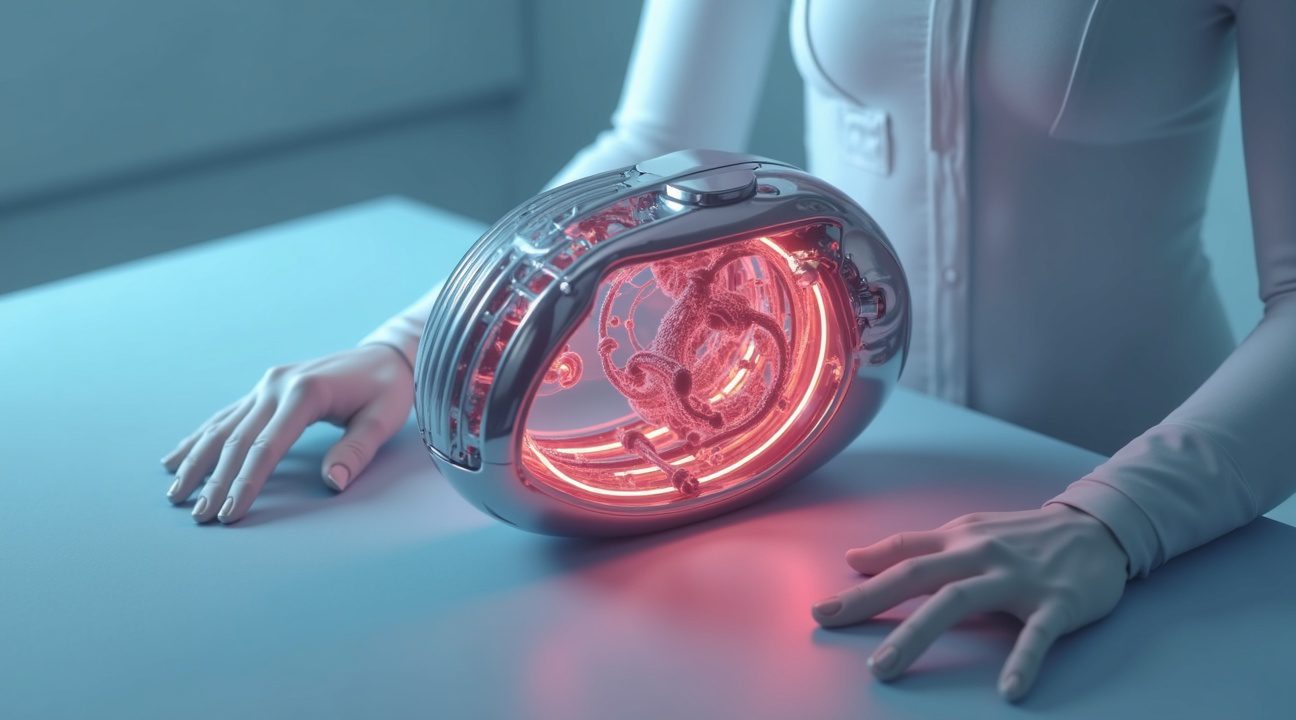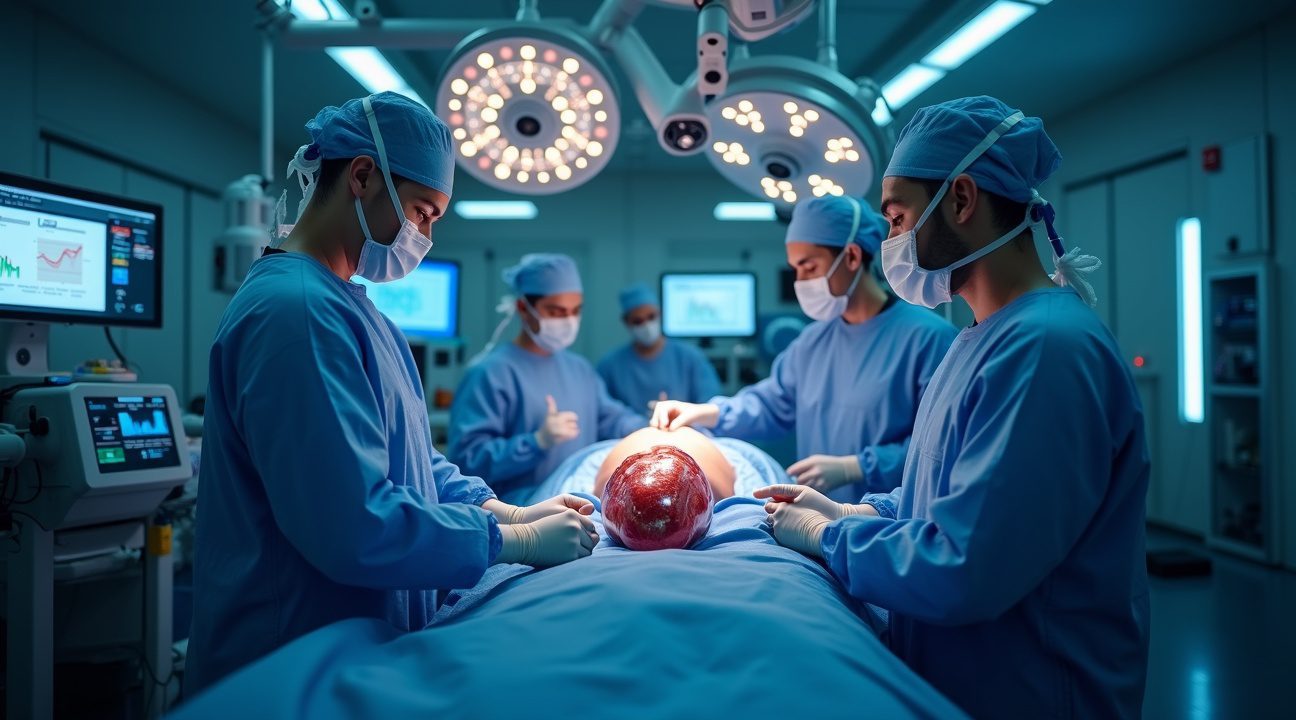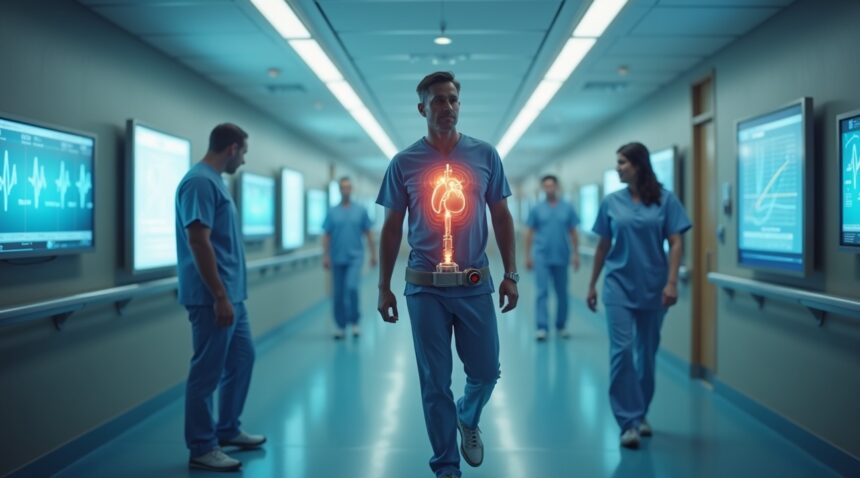Breakthrough in Artificial Heart Technology: Australian Survivor Sets Record
An Australian man in his 40s made medical history by becoming the first person to survive more than 100 days outside a hospital with a titanium artificial heart, dramatically surpassing previous survival records where patients lived no more than a month in hospital settings.
The revolutionary heart device, known as the BiVACOR, kept the patient alive for over three months at home by using advanced magnetic levitation technology. The man eventually received a successful heart transplant in March 2025, further validating the life-sustaining potential of the artificial organ.
Key Takeaways
- Unprecedented Survival: The patient achieved the longest recorded survival with a titanium artificial heart beyond hospital supervision, living independently for more than 100 days—far beyond the previous one-month in-hospital record.
- Innovative Design: The BiVACOR device includes magnetic levitation with a single moving part, removing mechanical friction and significantly enhancing its durability—lab tests suggest a lifespan exceeding four years.
- Addressing Donor Shortage: With only 4,500 heart transplants taking place annually in the United States and 6.7 million adults living with heart failure, this technology offers real hope during critical donor shortages.
- Regulatory Progress: The FDA has approved expanded clinical trials for 15 additional patients in the US. However, it’s currently available only through research programs and is not yet commercially distributed.
- Future Applications: The device holds promise for wider treatment possibilities, including serving as a permanent artificial heart for individuals who are ineligible for traditional transplants due to age or other health limitations.
This medical milestone marks a transformative step forward in the field of artificial organ support, moving closer to sustainable long-term solutions for end-stage heart disease.
First Patient Walks Out of Hospital After Living 100 Days with Titanium Heart
An Australian man in his 40s achieved a medical milestone that redefined what’s possible with artificial heart technology. He became the first person in history to live more than 100 days outside of hospital with a titanium artificial heart, specifically the BiVACOR device, until receiving a successful human heart transplant.
Breaking Previous Survival Records
This achievement dramatically surpassed previous attempts with titanium artificial hearts. Earlier U.S. patients lived no more than a month in hospital with similar devices, but none had the opportunity to return home. The Australian patient’s journey began with a six-hour surgery to implant the device in November at St. Vincent’s Hospital in Sydney. After months of recovery and monitoring, doctors discharged him in February 2025, allowing him to live independently until he received a donor heart in March 2025.
The contrast between his pre-surgery condition and post-implant life was remarkable. Before the procedure, he couldn’t walk more than 10–15 meters without experiencing severe shortness of breath. The titanium heart changed everything, enabling him to walk meaningful distances and perform daily activities that had become impossible.
Living with Advanced Technology
The patient’s success relied on sophisticated technology that made independent living possible. An external portable controller managed the artificial heart’s function while ongoing monitoring ensured his safety. This setup allowed him to maintain a near-normal lifestyle outside hospital walls, something that five previous U.S. patients in earlier trials never experienced.
Modern medical devices continue pushing boundaries in ways that seemed impossible just years ago. The BiVACOR artificial heart represents a significant advancement in artificial intelligence integration with medical technology, demonstrating how innovation can transform patient outcomes.
The patient’s daily routine became remarkably ordinary despite the extraordinary technology keeping him alive. He could participate in family activities, take walks, and enjoy freedoms that his failing heart had previously denied him. This case proves that artificial hearts can serve as more than temporary bridges to transplantation – they can restore quality of life in profound ways.
His successful transition from hospital to home life marks a turning point for artificial heart technology. The longest documented survival with a titanium artificial heart outside of hospital opens new possibilities for future patients facing similar challenges. This breakthrough suggests that carefully selected patients might soon have viable options beyond traditional hospital-based artificial heart support.
Revolutionary Titanium Heart Design Uses Single Moving Part
The BiVACOR device represents a significant advancement in artificial heart technology, utilizing a complete replacement system composed primarily of titanium. Weighing approximately 1.5 pounds and roughly the size of a human fist, this innovative device operates on a remarkably simple yet sophisticated principle that sets it apart from previous artificial heart models.
Magnetic Levitation Technology Powers Blood Circulation
The heart’s design centers around a single, magnetically levitated rotor that serves as the device’s only moving part. This rotor propels blood throughout both the body and lungs through continuous pulses, effectively replicating the function of a natural heart. By eliminating multiple mechanical components that typically cause friction and breakdown, the design significantly reduces wear and tear. Laboratory testing demonstrates the device can operate continuously for over four years, far exceeding the longevity of previous artificial heart systems.
The external components complement the internal device’s efficiency through practical engineering solutions:
- A driveline connects the titanium heart to an external controller through the abdomen.
- Rechargeable batteries provide approximately four hours of operation.
- Users can recharge these batteries overnight using a standard electrical outlet.
The controller’s portable design enables patients to leave hospital settings and engage in daily activities, dramatically improving quality of life compared to older, bulkier systems.
This artificial intelligence integration helps monitor and optimize the device’s performance. The compact structure makes the BiVACOR suitable for both adult and pediatric patients, offering scalability that previous models couldn’t match. Earlier artificial hearts suffered from:
- Size limitations
- Frequent mechanical failures
In contrast, traditional ventricular assist devices (VADs) only supported the left side of the heart rather than providing complete cardiac replacement.
The single moving part design represents a paradigm shift from complex mechanical systems that required multiple components working in harmony. Previous devices often failed due to mechanical stress on various moving parts, creating reliability issues that limited patient outcomes. The BiVACOR’s magnetic levitation eliminates physical contact between moving components, addressing the primary cause of device failure in earlier models. This innovation combines the benefits of smartwatch technology monitoring with life-sustaining cardiac function, creating a comprehensive solution for end-stage heart failure patients.

Critical Bridge Technology Addresses Severe Heart Failure Crisis
The Overwhelming Gap Between Need and Supply
The patient in this groundbreaking case suffered from severe biventricular heart failure, a condition that affects both sides of the heart and leaves patients with extremely limited treatment options. When someone faces this level of cardiac damage, medical teams can only consider total artificial hearts or transplants as viable solutions.
The statistics reveal a stark reality about heart failure treatment worldwide. In the United States alone, nearly 6.7 million adults live with heart failure, yet only around 4,500 heart transplants occur annually. This leaves over 3,600 patients languishing on transplant waiting lists, often with deteriorating conditions. Globally, the situation appears even more challenging, with fewer than 6,000 heart transplants carried out each year despite a much higher demand.
This massive shortfall between available donor hearts and patient need has created a critical healthcare crisis. Many patients die while waiting for transplants, highlighting the urgent requirement for alternative solutions that can sustain life during extended waiting periods.
Revolutionary Bridge Technology and Future Applications
The FDA has recognized this unmet medical need by approving expanded BiVACOR trials and trials for pig-heart xenotransplants. These regulatory decisions reflect the growing urgency to develop viable alternatives to traditional heart transplants. BiVACOR functioned as a ‘bridge to transplant’ in this remarkable case, sustaining the Australian patient until a donor heart became available.
Modern artificial heart technologies like BiVACOR represent a crucial advancement in addressing the transplant shortage. These devices help close the gap between transplant need and supply by providing patients with life-sustaining cardiac support for extended periods. The titanium heart technology demonstrates how artificial intelligence and advanced materials can work together to create life-saving medical solutions.
Looking forward, devices like BiVACOR may eventually serve as permanent solutions for patients who don’t qualify for heart transplants due to age, other medical conditions, or other factors. This evolution could fundamentally change how medical professionals approach end-stage heart failure treatment. The success of this 100-day survival record shows that artificial hearts can provide not just temporary support, but potentially long-term cardiac replacement therapy that maintains quality of life while patients await transplantation or as a permanent alternative.
Clinical Trials Expand as Technology Shows Promise for Permanent Use
I observe that BiVACOR remains exclusively available through clinical trials, with no commercial distribution currently permitted. This controlled access ensures researchers can carefully monitor patient outcomes while gathering critical safety and efficacy data.
Trial Expansion and Regulatory Progress
The FDA has recently authorized 15 additional U.S. patients to participate in BiVACOR trials, signaling growing confidence in the technology’s potential. Meanwhile, Monash University in Australia maintains four additional devices ready for immediate implantation, demonstrating coordinated international research efforts. These expanded trial parameters allow researchers to study diverse patient populations and refine surgical protocols.
Trial participants currently receive the device as a bridge to heart transplantation rather than a permanent solution. However, cardiologists increasingly view this technology as potentially transformative for patients who don’t qualify for donor hearts due to age, medical complications, or organ availability constraints.
Timeline and Commercial Viability Challenges
Industry experts project that broader usage could become reality within five years if positive trial results continue. This timeline reflects the careful progression required for revolutionary medical devices, where safety takes precedence over speed.
Several significant obstacles must be addressed before widespread adoption becomes feasible:
- Device manufacturing costs currently exceed what most healthcare systems can absorb
- Surgical procedures require specialized training and equipment that few medical centers possess
- Ongoing infrastructure needs include dedicated monitoring systems and technical support
- Long-term maintenance protocols remain under development as researchers study extended use
The technology’s complexity demands substantial investment in both human resources and physical infrastructure. Hospitals considering participation must evaluate whether they can provide the comprehensive care these patients require throughout their treatment journey.
Future Applications and Regulatory Hurdles
Some medical professionals envision scenarios where the artificial heart functions as a permanent solution rather than simply buying time for transplant candidates. This shift would dramatically expand the potential patient population, particularly benefiting elderly individuals or those with multiple comorbidities who currently face limited options.
Successful commercialization depends heavily on continued positive clinical outcomes and eventual regulatory approval. The FDA’s current authorization represents early-stage approval, but full market clearance requires extensive documentation of long-term safety profiles and patient outcomes.
Cost-effectiveness analyses will play a crucial role in determining insurance coverage and healthcare system adoption. Artificial intelligence integration could potentially reduce monitoring costs and improve patient management efficiency, making the technology more economically viable.
Access equity presents another significant consideration. The device’s high cost and specialized requirements could create disparities between major medical centers and smaller facilities. Researchers must address how to ensure fair distribution across geographic regions and socioeconomic groups.
Safety concerns remain paramount as clinical trials progress. While early results appear promising, longer observation periods are essential to identify potential complications or device limitations that might not manifest immediately. The titanium construction offers durability advantages, but questions about biocompatibility and mechanical reliability over extended periods require thorough investigation.
Medical device innovation continues advancing rapidly, and the BiVACOR program represents just one approach to addressing end-stage heart failure. Competition from alternative technologies could influence development timelines and market positioning.
The path from experimental treatment to standard medical practice involves numerous regulatory checkpoints and safety validations. Each successful patient outcome builds the evidence base needed for eventual approval, but researchers must maintain rigorous standards throughout the process. Patient selection criteria, surgical protocols, and post-operative care guidelines will all require refinement based on accumulating clinical experience.

Sources:
BiVACOR
St. Vincent’s Hospital, Sydney
Monash University
U.S. Food and Drug Administration (FDA)


